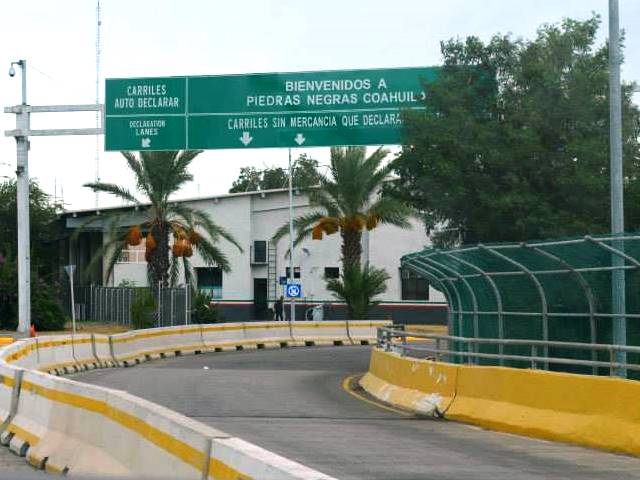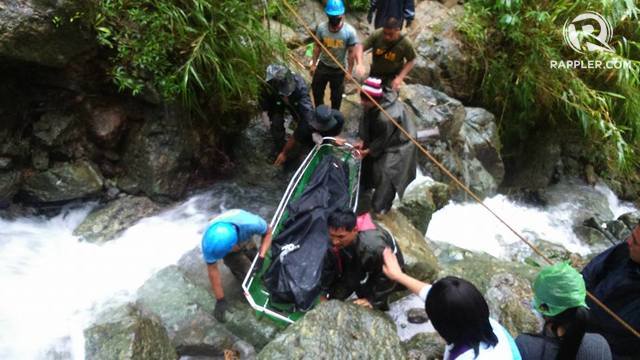
There are about 181 unidentified bodies in British Colombia, which account for more than half of all such cases in Canada, according to the RCMP's Unidentified Human Remains Unit in Surrey, B.C.
Due to having the highest numbers in the country, B.C. is one of the only provinces with a dedicated unit tasked with identifying human remains. B.C.'s Identification and Disaster Response Unit [IDRU] typically investigates three types of cases. Unidentified Human Remains cases, like the ones we are talking about here, are cases where, due to circumstances related to their death, the deceased person cannot be identified.
Unidentified Partial Remains cases feature victims who have been identified, but are incomplete. The IDRU's role is to re-associate any additional remains they find belonging to that person with the identified body or previously discovered remains. Presumed Deaths are cases where people are missing and their bodies could not be located or recovered. It's the IDRU's responsibility to find proof of death so these people can be declared legally deceased under the Coroners Act.
Laurel Clegg, head of the IDRU, offers some insight as to why so many people who die in B.C. go unidentified.
Who Are These People?
This simple question doesn't have a simple answer. It would be nice to have a profile of the average unidentified body featuring the average age, ethnicity, sex and other identifying factors, but it just isn't that straightforward.
“Unidentified Human Remains represent the population of the province and are just as varied in age – from newborns to those in their 80’s – sex and ethnicity as the province itself,” says Clegg.
B.C.'s oldest case of unidentified remains on the books right now is from 1962. Back then, technology just wasn't available to solve these cases, but significant inroads have been made since then. The IDRU can now go back and solve many of these cold cases using tools like DNA, isotope analysis and forensic dentistry, but there are still a number of barriers to identification.
“Unfortunately, lack of identification often co-exists with lack of other information such as cause and manner of death, or incomplete remains; as such, it is rarely possible to determine if unidentified remains are particularly associated with other factors in the province,” says Clegg.
These factors include B.C.'s harsh geography, foul play, the economic status of the deceased or any other factor that could determine who these people are.
“Unidentified remains, once identified – and if possible, with a cause of death – are representative of the populace of British Columbia, with the majority of deaths being undetermined, accidental or suicide,” says Clegg.
Where these remains are found is also representative of the distribution of B.C.'s population, with more unidentified remains cases occurring in the Lower Mainland, than in the remote areas of the province. Plus, the extreme landscapes of B.C. mean that more unidentified remains are found in or next to water, along remote roads, or in remote locations.
Why Are So Many of the Unidentified in B.C.?
The province's landscapes are a double-edged sword. While B.C.'s moderate temperatures mean it's possible to live outside in some areas year-round, the rough terrain means quite a few places are deceptively treacherous. It also doesn't help matters being surrounded by large bodies of water.
“Rivers, ports, glacial lakes and oceans can make identification of human remains very challenging,” confirms Clegg.
Since B.C. is one of Canada's only provinces with a dedicated unit for identifying unknown human remains, and thus reporting when they're located, it's difficult to determine whether B.C.'s numbers of unidentified deaths are actually higher than other provinces, or they just get reported and investigated more often because of this dedicated unit.
Another challenge facing investigators like Clegg, when it comes to identifying human remains, is time.
“The longer a person has been missing, the more difficult it becomes to gather information, such as dental records and DNA, from that missing person or their relatives,” says Clegg.
This is where the deceased person's socioeconomic status may play a role. Obviously, if people are going to be found, they have to be reported missing and that comes down to how likely a person will be reported missing, or not show up for work. The poorer or more marginalized someone is, the less likely they'll be missed or even have a job in the first place.
“It does not change how we investigate at the coroner service,” insists Clegg.
“Unidentified remains present the same challenges, regardless of the social standing of the individual they represent.”
While time stands as a hindrance to any investigation by the IDRU, Clegg says time is simultaneously their greatest ally.
“We constantly revisit unsolved cases and look at new ways of analysis. In this context, time offers us the promise of new techniques to solve what may be, at present, unsolvable.”
How Are These Cases Solved?
The B.C. Coroners Service investigates over 8,000 deaths every year and most of them are easily identifiable. Those cases that aren't so easy are given to the IDRU. Responsible for the investigation (and sometimes recovery) of unidentified human remains, the unit consists of two forensic scientists, a GIS analyst, who looks at digital geographic maps linked to databases, and a data analyst.
In addition to working the 181 unidentified death cases already on the books, the IDRU assists other coroners in solving new unidentified remains cases. Most of the cases are ones that weren't solvable back in the day, but thanks to technology, like nuclear and mitochondrial DNA analysis, are now able to be put to bed.
“The unit works with various police agencies, including the RCMP who provide information on missing persons,which allow us to make comparisons against the remains,” says Clegg.
The IDRU also has a DNA databank specifically designed for making genetic comparisons of missing persons and unidentified human remains. Aside from DNA, the IDRU also uses facial recognition, dental comparison, surgical interventions (including tattoos), and isotope analysis.
“Also, there are patterns, and such patterns are studied by the Coroners Research Division, which pulls information from all cases to make recommendations that help ultimately reduce the likelihood of unnatural deaths.” she continues.
For example, an analysis of accidental drownings in B.C. lakes and rivers showed that, especially in the summer months, a significant number of drownings were from people who were visiting from out of province or out of country. This led to further investigations, which then led to the realization that (a) many visitors from elsewhere are unlikely to understand that B.C. waters tend to be colder, deeper and have more abrupt drop offs than elsewhere, even in Canada, and (b) many foreign tourists might not be able to understand danger signs posted only in English.
This in turn led to some bulletins encouraging hosts (individual or corporate) to explain B.C. waters carefully to visitors. The Coroners Service also worked with provincial and local park officials to ensure signs included pictographs that could be understood by those with weak English language skills.
If You Know Something, Say Something
For all the work the IDRU does to put a face to unidentified remains and bring closure to families, none of their success is possible without the help of the public.
However, it is the police's responsibility to conduct missing persons investigations and follow-up with families, or whoever is reporting a disappearance. The Coroners Service only investigates human remains and usually has no jurisdiction until the remains are found.
“Of course, the two investigations are interconnected. We need to know about missing persons in order to match them with unidentified remains. We work with missing persons units within the police to facilitate collection of DNA and general information. The data collected is then compared against our collection of remains for eventual identification,” says Clegg.
In the past, though, there have been concerns over missing persons reports not being taken seriously.
“Initiatives to improve the system for sharing information on missing persons with coroners and medical examiners across the country will no doubt improve our ability to make comparisons, and thus, identifications,” says Clegg.
If you'd like to contribute to improving the existing system, Clegg recommends getting involved. You can do that by going to the B.C. Coroners Service or the National Centre for Missing Persons and Unidentified Remains websites where you can assist in identifying clothing, tattoos and faces.
“We are frequently assisted by other organizations such as the Doe Network who forward tips which we follow up with comparisons. We also work with many police agencies who constantly revisit unsolved missing persons cases, both within and outside of British Columbia. One very important factor, in being able to complete this work, is that people report others missing,” says Clegg.
“Sometimes we will identify someone only because they have finally been reported missing and thus we can include them for comparison. Anyone can report someone missing – not just family members – and it doesn’t matter how long it has been since their disappearance.”
Friday 18 September 2015
https://ca.news.yahoo.com/blogs/dailybrew/b-c--has-the-highest-number-of-identified-bodies-in-the-country--who-are-they-200208875.html





